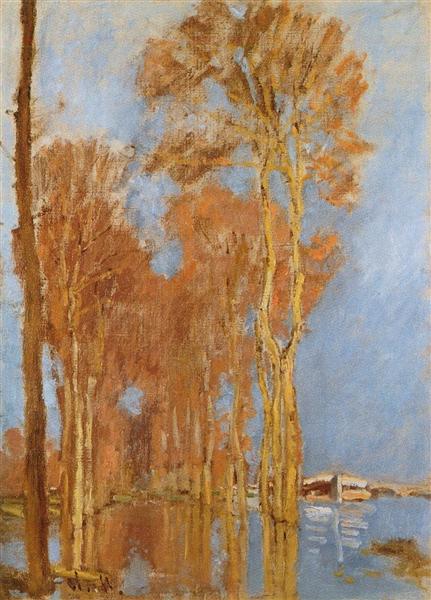Description
Claude Monet’s painting “The Deluge”, painted in 1872, is a testament to the French master’s fascinating journey in exploring light and water, recurring themes in his work. This painting, which stands as a significant example of the Impressionist style, is set in a maritime setting where nature is displayed in all its splendor and restlessness. At first glance, the composition evokes an atmosphere of chaos and imminent transformation. Monet employs a palette of intense and varied colors, where shades of gray, blue and white predominate. This chromatic selection not only represents the stormy weather, but also emphasizes the ephemeral and changing nature of light, a concept that would obsess the artist throughout his career.
Looking more closely at the painting, one notices how Monet uses quick, loose brushstrokes to capture the dynamics of the water. The waves seem to come to life, rocking with a force that reflects the imminent arrival of the flood. The depiction of the water’s surface is both a masterpiece of technique and emotional interpretation of the natural phenomenon, as the viewer can almost feel the movement and roughness of the waves. The impressionist technique allows the river, in its fury, to appear vibrant, while the clouds gather menacingly in the sky, heightening the sense of a moment that evokes both the sublime and the terrifying.
Unlike Monet’s other works, The Deluge lacks explicit human figures, which causes the focus to be entirely on the chaos of the natural environment. Without the presence of characters, the work invites the viewer to meditate on the relationship between humanity and nature as forces in conflict. This absence of a human figure highlights the grandeur and indomitable force of nature, a recurring theme in Romanticism, which Monet would reinterpret from the perspective of Impressionism. The work, therefore, becomes a reflection on human vulnerability in the face of the immensity of the elements.
Monet, while widely recognized as one of the founders of Impressionism, also explored other genres and styles throughout his career. The Deluge is notable not only for its atmospheric depiction, but also for its technique. By this time, Monet had already begun to experiment with capturing light in all its nuances, and this work is a reflection of his maturity as a painter. The impression of movement and his ability to capture natural light on water are distinct characteristics that mark his transition to deeper works, such as the Water Lilies series.
In conclusion, “The Deluge” from 1872 stands out as a fundamental piece in Monet’s evolution towards the mastery of the impressionist landscape. The work not only stands out for its technical innovation and mastery in the use of color, but also for its ability to evoke a deep connection between the human and the natural. When looking at the canvas, we are immersed not only in an episode of nature, but in a moment of reflection on the sublime music of water and sky, a powerful reminder of the beauty and misfortune that nature can present at its best.
KUADROS ©, a famous painting on your wall.
Hand-made oil painting reproductions, with the quality of professional artists and the distinctive seal of KUADROS ©.
Painting reproduction service with satisfaction guarantee. If you are not completely satisfied with the replica of your painting, we will refund 100% of your money.

